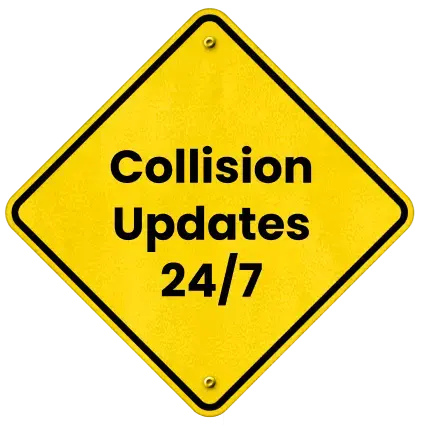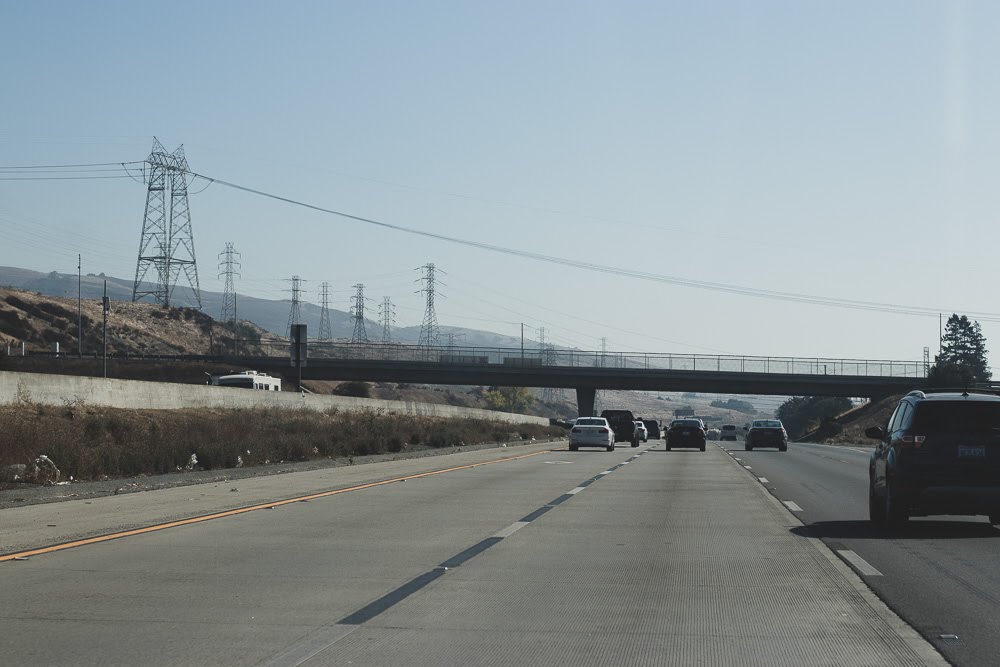
Winter Driving on I-35 (IA/MN): Black Ice & Bridge Freezing


Interstate 35 (I-35) is a vital north-south corridor connecting Iowa and Minnesota, serving commuters, long-distance travelers, and commercial traffic. During winter, this highway presents unique hazards that demand careful attention, including black ice, bridge freeze, snow accumulation, and rapidly changing weather. Drivers unprepared for these conditions risk slide-offs, collisions, and multi-vehicle accidents.
Staying safe on I-35 requires an understanding of the roadway, anticipation of hazards, and knowledge of effective driving strategies. In this article, we will explore all of that and more to provide drivers on I-35 with useful safety tips and guidance.
Why Bridges Freeze First and How to Recognize Black Ice
Bridges and overpasses are especially dangerous during winter because they lose heat from both above and below, freezing faster than standard roads. Unlike ground-level highways, which are insulated by the earth, bridge decks are exposed to cold air on all sides. This makes them prone to ice formation even when nearby roads appear clear.
Black ice is a thin, nearly invisible layer of ice that frequently develops in these areas, particularly on shaded overpasses or where water has pooled and refrozen. Because it is transparent, black ice can mislead drivers into thinking the surface is safe, and traction can be lost suddenly, causing spin-outs or collisions. These conditions are most dangerous during early mornings, evenings, light freezing rain, or immediately after snow melts.
Recognizing black ice requires careful observation: look for unusually reflective or glossy patches, slightly darker areas on the roadway, or subtle differences in how tires respond. Understanding that bridges freeze first and knowing the subtle cues of black ice allows drivers to adjust speed, increase caution, and maintain control during winter travel on I-35.
Preparing Your Vehicle and Driving Safely on Winter Roads
Proper vehicle preparation for the colder months and cautious driving are essential for safely navigating I-35 in the wintertime. Drivers should ensure their vehicles are fully winter-ready by performing routine maintenance and carrying necessary safety equipment. Key steps include:
- Vehicle Maintenance: Check tire tread depth and consider winter tires for improved traction on snow and ice. Ensure brakes, windshield wipers, and lights are fully functional. Windshield washer fluid should contain antifreeze, and batteries should be inspected for reliability in cold weather. Properly maintained vehicles are less likely to experience mechanical failures that can trigger accidents in hazardous conditions.
- Emergency Kit: Carry blankets, a flashlight, water, non-perishable food, a first-aid kit, and jumper cables in case of a breakdown or extended delay. Additional items such as a small shovel, sand or kitty litter for traction, and extra gloves or hats can be lifesavers in rural or remote areas along I-35.
Beyond vehicle preparation, cautious driving behavior is critical. Drivers should reduce speed and avoid sudden steering, braking, or acceleration. Slower, deliberate movements help maintain control on icy or snow-covered roads. Increasing following distance provides a safety cushion in case the vehicle ahead stops abruptly or loses traction.
Using low beams instead of high beams improves visibility without creating glare from reflective ice or snow. In addition, planning routes ahead by checking traffic maps, winter weather alerts, and road closures helps drivers avoid high-risk areas such as congested merges, short ramps, and shaded stretches prone to black ice.
Winter crashes on I-35 in Iowa and Minnesota often occur in specific patterns. Bridges and overpasses freeze faster than other road surfaces because air circulates both above and below the concrete or steel, removing heat more quickly. Shaded areas, particularly near forests or embankments, can retain ice longer even when the rest of the roadway has melted.
Drivers may encounter slide-offs while merging, multi-car collisions from sudden stops, or spin-outs on rural stretches that are slower to receive snow removal. Steep grades, curves, and narrow lanes increase the risk further, especially during periods of heavy traffic or limited visibility. Even minor miscalculations, such as braking too hard or accelerating too quickly, can result in serious accidents.
Additional strategies can help drivers minimize risks during winter travel on I-35:
- Stay Informed: Monitor local Department of Transportation alerts for Iowa and Minnesota, including lane closures, plowing schedules, and salt or sand treatments. Adjust departure times to avoid peak periods of snow or ice accumulation.
- Practice Defensive Driving: Anticipate the actions of other drivers, particularly those who may not reduce speed or maintain safe distances in icy conditions. Be prepared for sudden stops and keep an escape route in mind.
- Know How to React: If your vehicle begins to skid, steer in the direction you want the front wheels to go and avoid slamming on the brakes. For vehicles with anti-lock braking systems (ABS), maintain steady pressure on the brake pedal while steering to safety.
Finally, keeping a calm and measured approach on winter roads is crucial. Icy conditions can amplify small errors, turning minor incidents into serious accidents. By maintaining focus, continuously scanning the road for black ice or shaded patches, and ensuring that vehicles are fully prepared for winter conditions, drivers can significantly reduce their risk of collisions. Following these strategies not only protects your safety but also the safety of other motorists on I-35.
Common Winter Crash Scenarios on I-35
- Bridge Slide-Offs: Vehicles often lose control on icy overpasses and exit ramps, especially in shaded areas where ice forms faster.
- Multi-Vehicle Collisions: Sudden stops on frozen roads can quickly lead to rear-end or chain-reaction crashes, particularly during high commuter periods.
- Spin-Outs on Rural Stretches: Open road segments with limited snow clearing increase the likelihood of vehicles sliding off the highway.
- Ramp and Merge Collisions: Short merge lanes and traffic bottlenecks are especially dangerous when roads are slick or visibility is limited.
Northern Iowa and Minnesota are especially vulnerable to icy roads, snow, and freezing rain. Combined with steep grades, shaded stretches, and high commuter or commercial traffic, these conditions create high-risk zones where drivers must remain vigilant at all times. Snowdrifts, drifting ice patches, and wind-blown snow can reduce visibility and traction unexpectedly, further increasing the danger of accidents.
What to Do After a Winter Accident on I-35
Winter accidents on I-35 can be sudden and frightening, especially when caused by black ice, bridge freeze, or slippery road conditions. Knowing how to respond calmly and methodically can protect your safety and help preserve evidence for insurance or legal purposes.
If you experience a slide-off, spin-out, or collision:
- Assess Injuries: First, check yourself and any passengers for injuries. Call 911 immediately if anyone is hurt. Even minor injuries should be evaluated, as some symptoms may not appear right away.
- Move to Safety: If vehicles are drivable, carefully move them to the shoulder or another safe area to avoid secondary collisions. If moving the vehicle is unsafe, stay inside with hazard lights activated to alert other drivers.
- Document the Scene: Take clear photographs of vehicle damage, skid marks, icy patches, bridge surfaces, road conditions, and nearby hazards. These details can be critical for insurance claims or any legal proceedings.
- Gather Information: Exchange contact and insurance information with other drivers involved. Collect names, phone numbers, and statements from witnesses, and obtain the responding law enforcement officer’s report number.
- Contact Authorities: Even if injuries seem minor, filing an official police report can protect your interests by providing an unbiased account of the crash.
- Notify Your Insurance Provider: Inform your insurer as soon as possible. Prompt reporting ensures the claims process begins quickly and helps avoid disputes over coverage.
Beyond these steps, remain calm and patient. Winter accidents often involve challenging weather and road conditions, and reacting with composure helps prevent further incidents. Thorough documentation, accurate reporting, and timely communication with law enforcement and insurance companies can make a significant difference when filing claims or seeking legal recourse.
Remember, prioritizing safety first, your own and that of others on the road, is the most important action after a winter crash.
Support After a Winter Accident on I-35
Experiencing a winter crash on I-35 can be overwhelming, but luckily, help is available. Experienced accident professionals can guide drivers and passengers through insurance claims, liability questions, and legal considerations.
If you have any concerns regarding an accident, you can contact a skilled I-35 accidents lawyer and schedule a free consultation. Our professionals will provide you with personalized advice, ensure evidence is properly preserved, and assist you in planning next steps. From coordinating medical care to understanding legal rights, these experts help individuals and families regain a sense of control and confidence, ensuring safety and peace of mind throughout the recovery process.
